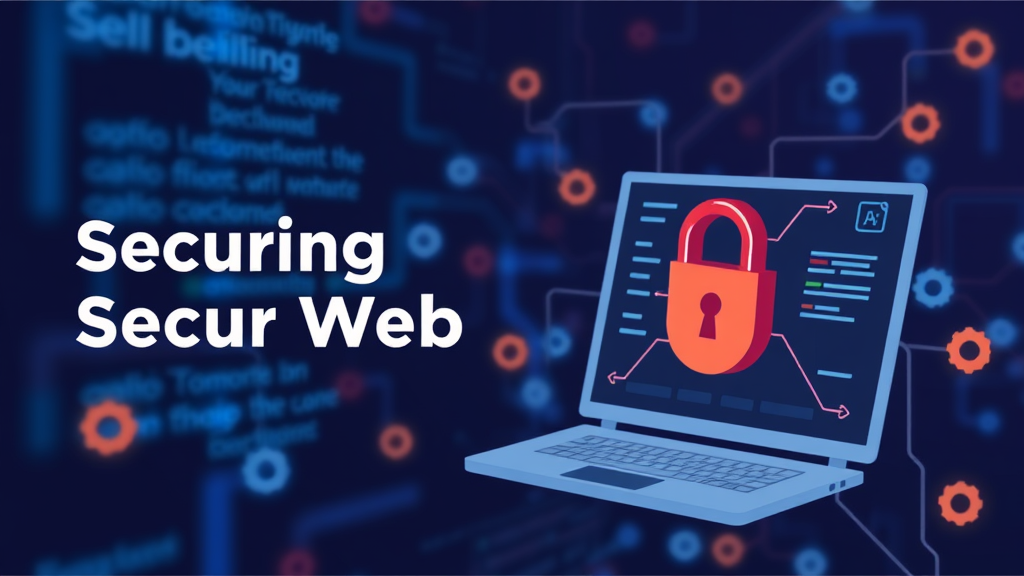Guide: Securing Your Web Application
A practical overview of common web vulnerabilities and essential security practices to protect your application and user data.
By Upingi Team / Published on January 10, 2025
A practical overview of common web vulnerabilities and essential security practices to protect your application and user data.
By Upingi Team / Published on January 10, 2025
Web application security is paramount to protect sensitive data, maintain user trust, and ensure service availability. Common threats like data breaches, denial-of-service attacks, and defacement can cause significant financial and reputational damage. Security isn't a feature you add at the end; it's an ongoing process integrated throughout the development lifecycle.

This guide provides an overview of fundamental security practices, touching upon concepts often highlighted in the OWASP Top 10 list of critical web application security risks, aiming to equip developers with essential knowledge to build more secure applications.
Never trust user input implicitly. Malicious input is the root cause of many vulnerabilities, including SQL Injection (manipulating database queries) and Cross-Site Scripting (XSS) (injecting malicious scripts into websites viewed by other users). Implement strict validation on both the client-side (for user experience) and, crucially, the server-side (for security). Validate data types, lengths, formats, and allowed ranges. Use output encoding (e.g., converting `<` to `<`) when displaying user-provided data in HTML to prevent XSS.
Use established libraries for validation and sanitization specific to your language/framework. For example, use prepared statements or ORMs to prevent SQL injection, and context-aware output encoding libraries to mitigate XSS.
Authentication verifies a user's identity (Are you who you say you are?), while Authorization determines their permissions (What actions are you allowed to perform?). Implement strong authentication mechanisms: securely hash passwords using modern algorithms (like Argon2 or bcrypt) with unique salts per user, enforce strong password policies, and strongly recommend/require Multi-Factor Authentication (MFA). Manage sessions securely using robust mechanisms (e.g., framework-provided session management, secure cookie flags, short-lived tokens like JWTs). Prevent broken access control by enforcing authorization checks on every request for protected resources.
Adhere to the principle of least privilege: grant users only the minimum permissions necessary to perform their tasks.
Always use HTTPS (HTTP over SSL/TLS) to encrypt data exchanged between the client and server, preventing eavesdropping and tampering. Obtain SSL/TLS certificates from trusted Certificate Authorities (free options like Let's Encrypt are widely available). Implement security-enhancing HTTP headers like `Strict-Transport-Security` (HSTS) to enforce HTTPS, `Content-Security-Policy` (CSP) to control resource loading and mitigate XSS, and `X-Frame-Options` to prevent clickjacking. Ensure your servers, databases, and frameworks are securely configured: disable default accounts/passwords, remove unnecessary services, and apply security patches promptly.
Modern applications rely heavily on third-party libraries and frameworks. These components can introduce vulnerabilities if not managed carefully. Use package managers (like npm, pip, Maven, Composer) to handle dependencies, but be mindful of what you include. Regularly scan your project's dependencies for known vulnerabilities using tools like `npm audit`, `pip check`, OWASP Dependency-Check, or commercial SCA (Software Composition Analysis) tools. Keep your dependencies updated to their latest stable and secure versions.
Effective logging is crucial for detecting security incidents, debugging issues, and performing forensic analysis. Log significant security-related events, including successful and failed authentication attempts, authorization failures, server-side input validation failures, and changes to permissions. Ensure logs do *not* contain sensitive information like passwords, session tokens, or credit card numbers. Centralize logs and implement monitoring and alerting systems to detect suspicious activities or anomalies in real-time.
Securing web applications involves addressing vulnerabilities across multiple areas, from input handling and authentication to server configuration and dependency management. Remember that security is not a destination but a continuous journey. Stay informed about emerging threats (like those listed by OWASP), conduct regular security reviews and testing (penetration testing, code audits), and foster a security-conscious culture within your development team.